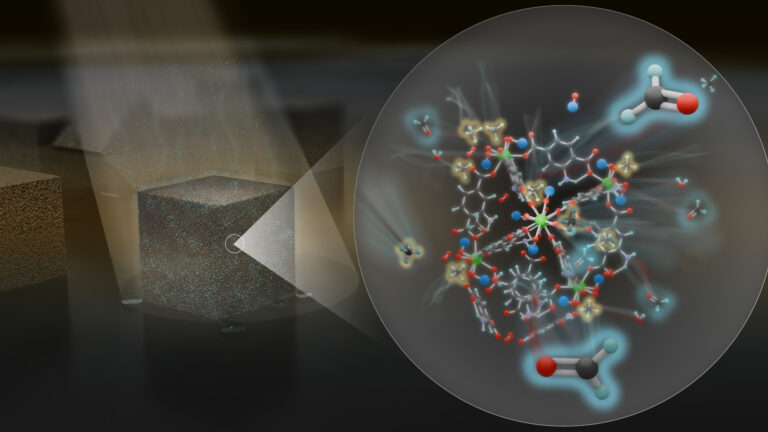Chemistry
Blueprint guides the shape of things to come
The ability to more precisely design an industrial material will support broad applications such as the storage of gas, including CO2.

The functionality of a special class of porous materials, known as metal–organic frameworks (MOFs), depends on their design and diversity of application. An international team led by KAUST has developed a blueprint that can help researchers to precisely craft the MOF they seek.
MOFs are three dimensional networks that comprise two main components — metal ions or clusters, and a joining organic molecule, known as a linker — the choice of these components determines their chemical and physical features. The three dimensional structure of MOFs give them broad industrial applications. Bridging the gap between organic and inorganic materials, MOFs show great potential for applications in adsorption, separation, drug delivery, biomedical applications, sensing, catalysis, etc. However, there needs to be improved stability and performance of current MOFs before they will be practical to replace other nanoporous materials..
While MOFs can be precisely designed, one current challenge for scientists is to predict what network structure will arise from each assembly or synthesis step. A range of potential shapes can emerge even when combining only simple building blocks. The trick is to ‘dial up’ the right structure.
“It is crucial to be able to produce made-to-order materials for industrially relevant applications,” explains Mohamed Eddaoudi, of the Advanced Membranes and Porous Materials Research Center. “We were looking for a careful and efficient design strategy so we can target an ideal material that would have an appropriate pore system suitable for a given application.”
Eddaoudi’s team discovered a new metal-ion cluster that they could use as a blueprint for MOFs that have a modular type of structure. This cluster, called an 18-connected net, is formed by arranging organic carboxylate ligands around nine rare earth metal ion nuclei1.
They used this cluster as a molecular building block to form a MOF in which triangular organic ligands acted as the linker between two sets of rare earth clusters. This resulted in an unprecedented network topology, called a (3,18)-connected net (see image).
The team used this topology as a blueprint to synthesize different MOFs with a modular structure, demonstrating this by replacing the rare earth clusters with a similarly structured but larger, more open metal-organic polyhedron that also contained 18 vertices. This building block approach means the team could transpose the same (3,18)-connected network topology on to different MOFs with more complex building blocks.
Produced from large organic polyhedral compounds, these MOFs form low density materials with large pores and pore volume: a spongy structure that enables them to reversibly store a range of gases of industrial or ecological importance.
References
- Guillerm, V., Weseliński, Ł.J., Belmabkhout, Y., Cairns, A.J., D’Elia, V. et al. Discovery and introduction of a (3,18)-connected net as an ideal blueprint for the design of metal–organic frameworks Nature Chemistry 6, 673–680(2014). | article
You might also like

Chemistry
Maximizing methane

Chemistry
Beating the dark current for safer X-ray imaging

Chemical Engineering
Net benefits for advanced materials design

Chemical Engineering
Ancient architecture inspires a window to the future

Chemistry
Squeezing more from carbon dioxide

Chemistry
Finding catalytic power in unexpected places

Chemistry
Scintillating new X-ray imaging

Chemistry



